
The mechanism, pitch, shape and the notes decide the family to which an instrument may belong to. They can be more particularly described as instruments of change by their sheer magnitude of sound. The Trumpet, Trombone, Horn and Tuba are the instruments that belong to the Brass family of musical instruments. This family of instruments is clearly distinguished by their ability to play louder than any other instrument and can even be heard from far away. Brass instruments are essentially very long pipes with bell–like shapes as ends. The pipes are twisted, curved and folded into different shapes. Their earlier ancestors may have been made from wood, tusks, animal horns or shells. However, today’s instruments are made from brass. The earlier instruments were used for specific purpose other than music. In the medieval times, they were used to proclaim the arrival of the monarchs and troops. Great masters of music such as Mozart and Beethoven used Brass instruments in their ensemble of sacred music. Later, they were used by military and gradually became a part of musical ensembles.
Historical records points out to the evidence that the Brass instruments were found in 1500 BC and earlier. By 1400 BC, the Egyptians had made a trumpet–like instrument from metals such as bronze and silver. These bronze and silver trumpets date back to the grave of Tutankhamen in Egypt, one of the earliest civilizations of the world. Metal trumpets of China and lurs from Scandinavia date back to the same period. The Moche people from ancient Peru depicted the trumpets in their carvings and paintings in the period 300 AD. The metal instrument had replaced earlier instruments made from animal skin and bones. The 400–year–old Oxus civilization of Central Asia used a particular type of Trumpet which had decorated swellings in the middle, a secret technical wonder which was made from one metal sheet.
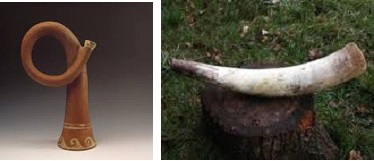
Players of the Brass instruments use their breath to produce sound. Instead of blowing in a reed, the lips of the player vibrate by buzzing them against a metal cup–shaped mouthpiece. The mouthpiece amplifies the buzzing of the lips, which creates the sound. Most of the Brass instruments have valves attached to the long pipes which resemble buttons. These valves when pressed open and close show different parts of the pipe. The pitch can be changed by pressing different valves and by buzzing the lips onto the mouthpiece, harder or softer.

The components of a Brass musical instrument are mouthpiece, valves, bell, finger hook, lead pipe, tubing, trigger, tuning slides and water keys.
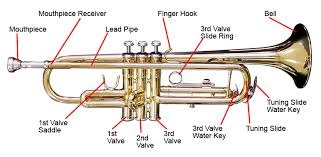
The Brass instruments are made from brass, gold, silver and most commonly from yellow brass, which is an alloy of copper and zinc. The manufacturing process involves the main tube, bell, valves and the assembly. First, the main tube or pipe of the instrument is manufactured from machinable brass that has been moulded into a pole–shape, which is tapered and lubricated. It is then cast into a doughnut–shaped dye and tapered. The bell is cut out from a brass sheet using a pattern and the cut sheet is hammered around a pole. The ends of the tube are joined into the butt joint and lap joint. The bell is soldered to the main tube. The valves, knuckles and other accessories are given an acid wash. The instrument is assembled by soldering the tubes, valves, ferrules and finally the mouthpiece is inserted into the main tube.
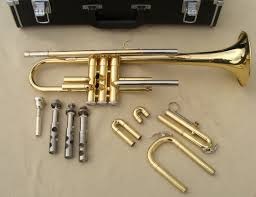
The Brass instruments are generally known for their loud pitch and sound. In ancient times when the societies were witnessing major changes in the political and social areas, music was the form and musical instruments were the means to express, either a protest or an agreement. Brass instruments, with their sheer sound quality helped in making a strong musical statement. They are played across a wide range of musical ensembles such as an orchestra of classical and romantic era, concert bands, British brass bands, quintets, big bands and Mexican bands and jazz music. Today, Brass instruments are used by rock and pop and jazz ensemble when loud music is to be created.
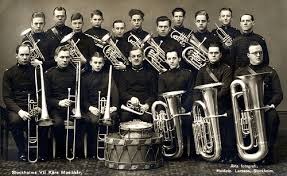
Major types of Brass instrument include:
- Valve instruments such as trumpet, horn, euphonium, tuba, cornet, flugelhorn, trombone, tenor horn, baritone horn, sousaphone, mellophone, and saxhorn.
- Slide Brass instruments include sackbut and bazooka.
- Natural Brass instrument includes the bugle.
- Keyed or fingered Brass instrument includes ophicleide, keyed bugle and keyed trumpet.
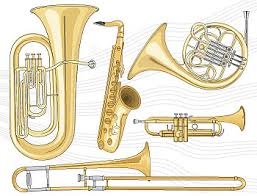
The use of trombone as solo and chamber literature has its beginning with great composers Leopold Mozart, Georg Christophe Wagenseil, Johann Albrechtsberegr and Ernst Eberlin. Robert Schumann, Richard Wagner and Joseph Haydn incorporated trombones and other Brass in their operas. Wolfgang Amadeus Mozart used trombone in his sacred works. Modern day jazz ensembles and rock bands such as Deep Purple play Brass instruments. Well–known musicians include Miles Davis (trumpet), Christian Lindberg (trombone), Oystein Baadsvik (tuba), Thomas Bacon (French horn) and Phineas Bower (euphonium).
The Royal Northern College of Music and the Utah School of Music and Dance in the USA teach about the Brass instruments. Brass instruments include trumpet, trombone, tuba and horn amongst others. The learning is a 5 way process which includes:
- Selecting any one instrument to learn and play.
- Start with mock breathing as all brass instruments need buzzing of the mouth to start playing the sound.
- Repeat the buzzing with the actual instrument.
- Tighten the lips and start pushing the valves down.
- If buzzing is hard then one can use a mouth piece.
- Learning the scale and notes and push the valves.
- Leave all the valves; buzz, and the note produced is a C.
For any beginner to learn to play the brass instruments, teachers and established players can be sought for guidance. Some beginners may learn to play in 4 or 8.


